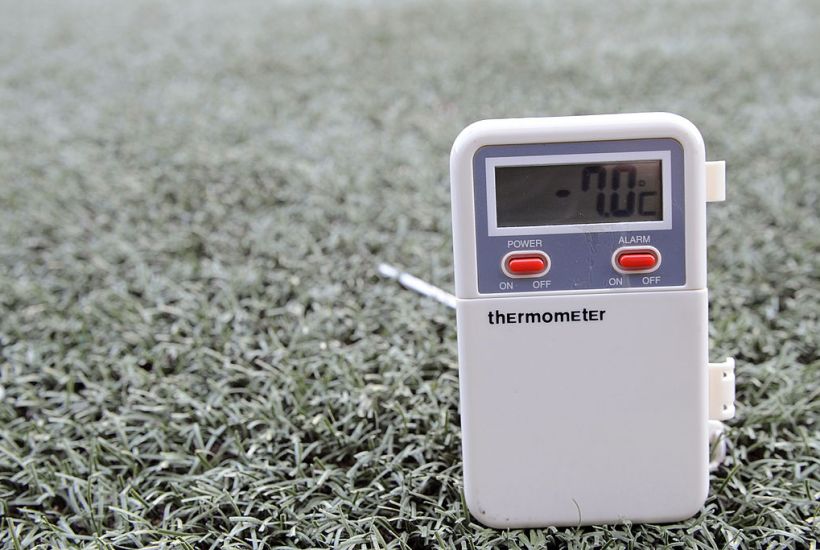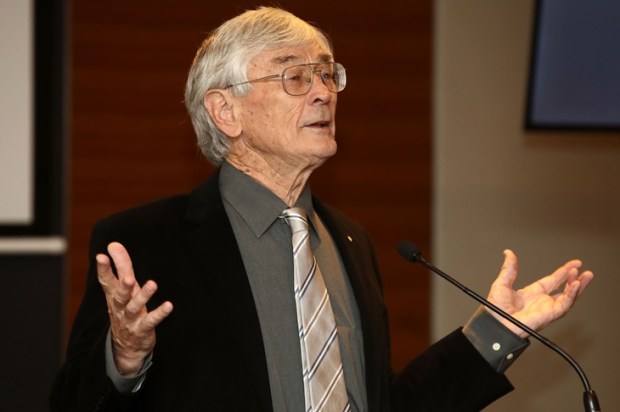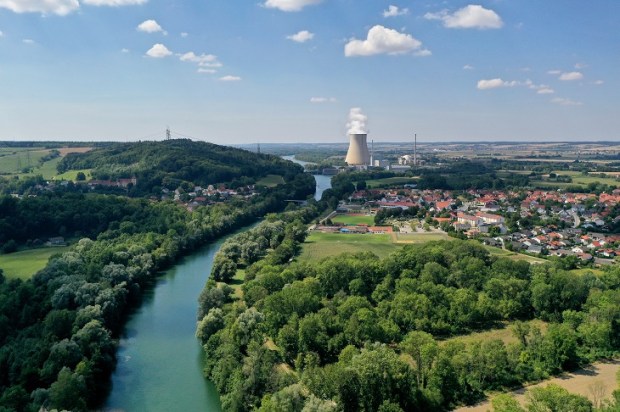The Associated Press is a worldwide news agency headquartered in New York City. It issues ‘The Associated Press Stylebook’ which is the definitive guide for ‘anyone who cares about good writing’. The latest 2017 edition explains that anyone who doesn’t accept that the world is warming from ‘man-made forces’ is best described as a ‘climate change doubter’.
So, you may believe in climate change from natural causes, but if you don’t believe it is human-caused right now – at this point in our history: you are best described as a ‘doubter’.
According to my Webster’s Dictionary of Synonyms, the word ‘doubt’ is synonymous with scepticism. Except that the new 2017 AP Stylebook clearly explains that use of the word ‘sceptic’ is not appropriate for those of us who doubt that recent warming is not wholly caused by us.
Why would The Associated Press be so concerned about global warming that it has bothered to issue a rule for editors and journalists that makes a somewhat dubious distinction between use of the term ‘sceptic’ and doubter?
Indeed, why have literary-types become so concerned with taking-sides in what might otherwise be a wholly scientific debate? And how strong is the empirical evidence that recent warming is actually human-caused?
The official science, as published by the United Nation’s panel on climate change, makes this very claim about global warming being caused by humans through reference to the Equilibrium Climate Sensitivity. In the panel’s last report this ECS value is calculated to be 3.2 °C. Given the stated 0.85 °C increase in global temperatures for the period 1880 to 2012, and assumptions about greenhouse gases and infrared radiation, this would indeed mean that most of the recent warming has been caused by carbon dioxide (CO2).
Except how sure can we be sure that 3.2 °C is the correct ECS value?
The ECS refers to the change in global mean near-surface air temperature that would result from a sustained doubling of atmospheric (equivalent) CO2.
A Swedish chemist, Svante Arrhenius, was the first to introduce the concept, and he proposed that a doubling of atmospheric CO2 could lead to a 5 to 6 °C increase in global temperatures – so Arrhenius’ ECS was about double the United Nation’s current value.
Arrhenius acknowledged that his calculations were speculative. In fact, Arrhenius’s calculations were based on the work of Samuel Langley who attempted to determine the surface temperature of the Moon by measuring the infrared radiation leaving the Moon and reaching the Earth. It wasn’t until 1988, however, that this very speculative theory captured significant political attention.
On a very hot summer’s day in 1988, James Hansen, then a NASA chief, claimed a 4.2 °C global temperature increase would result from a doubling of atmospheric CO2. Hansen was quoting output from general circulation models, which from the 1960s had incorporated a version of Arrhenius’s original calculations based on the Moon.
Since Hansen’s 1988 testimony, these estimates have been continuously adjusted down. In the United Nation’s 1995 report, for example, a doubling of CO2 was predicted to cause a 3.8 °C increase; then in 2001 a 3.5 °C increase; and in 2007 a 3.26 °C increase. In 2008, twenty years after his initial influential testimony, Hansen issued a statement to the effect that his central estimate for lambda () was now 0.75, requiring a further reduction of the official climate sensitivity estimate by one-quarter, to 2.5 °C for a doubling of CO2. Though the most recent United Nation panel’s best estimate, which is output from exactly 30 general circulation models, is 3.2 °C.
So far, I have mentioned a lot of possible values for the ECS, but they are all based on theoretical calculations. They ignore results from actual experiments. Modern high-resolution spectroscopy has enabled the measurement of the absorption and emission of infrared radiation by CO2 but only since the 1980s. These measurements indicate that the sensitivity of the climate to increasing concentrations of CO2 was grossly overestimated by Arrhenius, and these overestimations persist in the computer-simulation models that underpin the work of the United Nations to this day. Spectroscopic methods, which are essentially experimental scientific methods, suggest an ECS of something closer to 0.33 °C.
If we were to accept this much lower ECS value, then suddenly the United Nations would need a new explanation for the purported temperature increase of 0.85 °C during the twentieth century. The simplest explanation would be that recent warming, like past warming, has been caused by natural phenomena – the same mechanisms, for example, that caused the Medieval and Roman warm periods. And if you believe this you are a doubter – according to the Associated Press.
Regarding the Associated Press, there are subtle differences in the meaning of the words ‘doubt’ and ‘sceptic’. To ‘doubt’ is to feel uncertain about something, especially a religion beliefs. While a sceptic is a person inclined to question accepted opinions.
I don’t feel uncertain about human-caused global warming. I’ve considered the maths and the relevant scientific literature, and I’m simply sceptical of the alleged 97 per cent consensus. In fact, there is good reason to doubt the ECS values from the computer models that incorporate assumptions from a fanciful theory about the surface temperature of the Moon.
There is much more information on the calculation of ECS values in Chapter 19 of a new book, Climate Change: The Facts 2017 published by the Institute of Public Affairs. The chapter is authored by Dr John Abbot, an analytical chemist, and Dr John Nicol, a physicist with a background in spectroscopy. To purchase a copy click here.
Jennifer Marohasy is a Senior Fellow at the Institute of Public Affairs and has blogged at jennifermarohasy.com since April 2005.
Got something to add? Join the discussion and comment below.
Got something to add? Join the discussion and comment below.
Get 10 issues for just $10
Subscribe to The Spectator Australia today for the next 10 magazine issues, plus full online access, for just $10.


























Comments
Don't miss out
Join the conversation with other Spectator Australia readers. Subscribe to leave a comment.
SUBSCRIBEAlready a subscriber? Log in